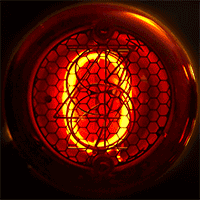This answer (given technological development to improve power efficiency) meets all but two of your requirements...but (potentially) bypasses their necessity. The two requirements being 'shaped into a bullet' and 'survive for 10 seconds.' This is actually a design for a true plasma weapon that fires a bolt of magnetically contained plasma.
Yes (given technological development)
The USAF has already developed a plasma weapon that meets all but two of your requirements; but, it also bypasses their necessity.
Developed by Phillips Laboratory. MARAUDER was a United States Air Force experiment to develop long-range plasma weapons. It revolved around firing electromagnetically contained plasma out of a railgun encased in a toroidal (donut shaped) container. Little is known about it after 1993 because it swiftly Classified Status. We don't know if it ever went anywhere.
Design
Their design for plasma containment is called a Compact Toroid, and their design was similar to an arrangement called a Spheromak. Basically, it looks like a donut. What's interesting about a Compact Toroid, however, is that they are capable of maintaining structural stability for a fraction of a second after release from the external magnetic fields that created it. In the case of MAURAUDER, the stability time was about $1 {\mu} s$. This was the project's biggest issue.
Results
MARAUDER took these Compact Toroids and fired them from a railgun. Because the projectile was light-weight and magnetically strong, the prototype was able to accelerate a Compact Toroid of plasma at $10^{10}g$ (or about $98,100,000,000 m/s^2$). The resulting projectile moved at $3,000 km/s$ and struck its target with a $\approx 5$ lb TNT explosion ($5 \times 10^{-7} kT = 2.092MJ$) ---and a potent, short-range electromagnetic pulse.
MARAUDER estimated that by the year 2000, they could increase the shot velocity to $10,000km/s$. Before that could happen, MARAUDER vanished into Classified Status.
Status
It is generally believed that MARAUDER was eventually scrapped. Because even with those insane speeds, their 'Plasma Bolt' didn't live long enough to achieve a useful range ($3,000 km/s \times 1 \mu s = 3m$).
However, in recent years, new research has shown promise in extending the lifespan of these Toroids. Some believe that we may not be far from getting containment times measured in Milliseconds ($ms$). And a plasma bolt with a lifespan of a millisecond, moving at 10,000km/s has a range of 10km. That's not bad at all. Still not quite good enough for the satellite-based weapon that MARAUDER was meant to be...but pretty solid for ground-based combat.
Conclusion
Modern Science generally acknowledges that a donut-shape is the best shape for containing Plasma. We're still messing with the specifics of the donut (how tall is it, how wide is it, how big is the hole, how much plasma do we shove in, how hot should the plasma be, etc), but the basic consensus is that Toroids are the ideal shape for a self-sustaining plasma bolt. They work a lot like a Smoke Ring does.
Naturally, in science fiction it would be very easy to explain that scientists discovered a more stable Toroidial configuration that lasts...well...however long you need it to last for the sake of the story. And it remains grounded in science.


